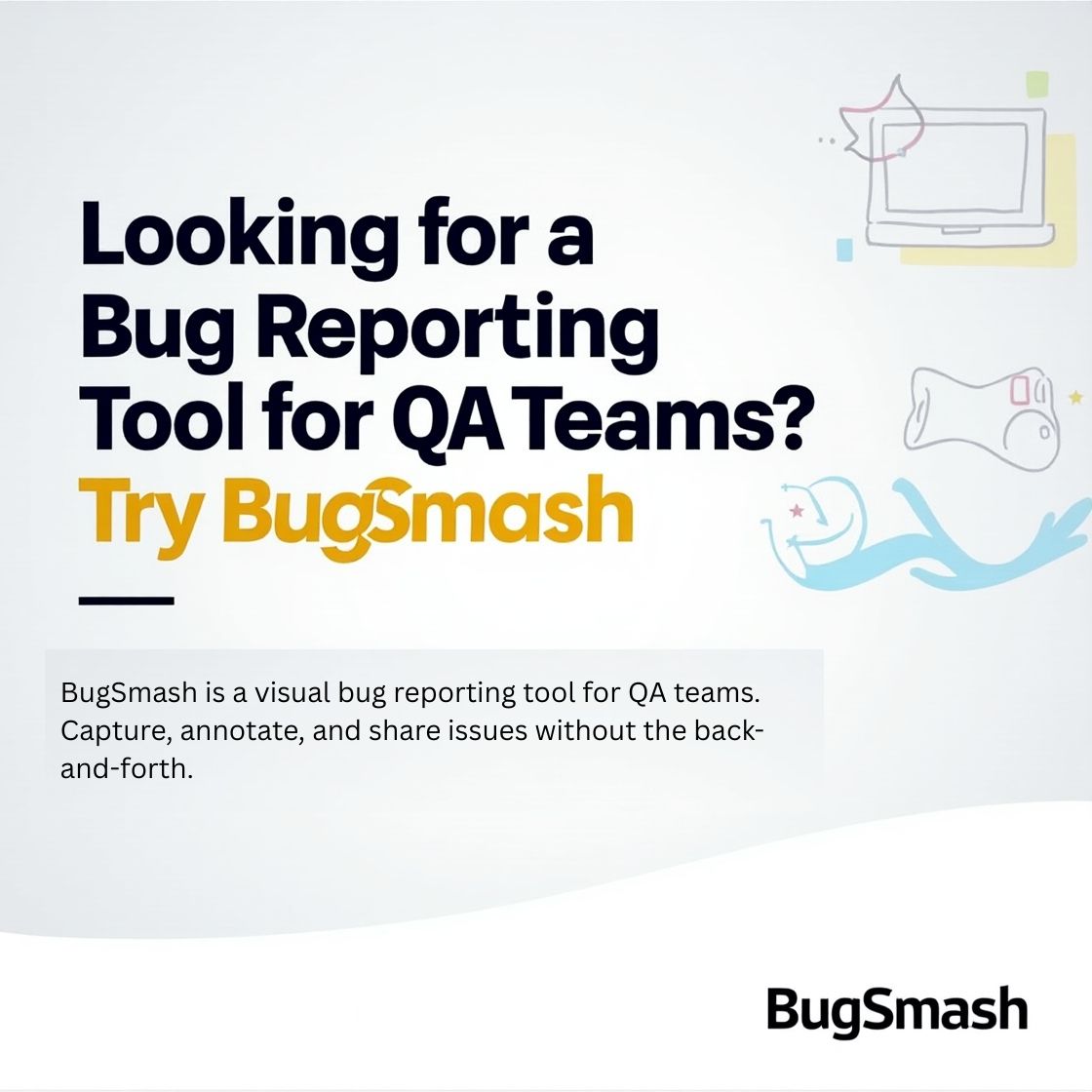QA Teams Deserve Better Than Vague Bug Reports and Slack Messages
If you’re on a QA team, you know the pain: A bug gets reported. The ticket says, “Broken on the homepage,” and maybe there’s a screenshot. But which device? Which browser? What steps led to the issue? Now you’re chasing down details instead of validating fixes.
This is where a bug reporting tool for QA teams makes all the difference. Not just any tool, but one that removes ambiguity, saves time, and helps teams resolve issues faster.
After testing several tools in live QA cycles, I can confidently say: BugSmash is the bug reporting solution your team didn’t know it needed.
Why Generic Tools Don’t Cut It for QA
Let’s face it—traditional bug tracking in tools like Jira or Trello is useful for management but painful for reporting. You’re switching tabs, uploading images, writing long explanations, and still ending up with tickets developers find confusing.
What QA teams need is something visual, contextual, and fast. That’s what BugSmash nails.
What Makes BugSmash the Ideal Bug Reporting Tool for QA Teams
1. On-Screen Annotations That Speak for Themselves
BugSmash lets you annotate directly on live websites, apps, PDFs, images, and more. Instead of writing “top-right icon doesn’t work on iOS,” you just pin the comment on the icon.
This kind of visual feedback drastically reduces confusion and saves everyone time.
2. Multi-Platform Bug Reporting
Your QA process likely spans different environments—web, mobile, PDFs, maybe even audio or video files. BugSmash handles them all.
Whether you’re testing a new landing page, a progressive web app, or reviewing final marketing videos, you can log issues in context.
3. No More Guesswork for Developers
With BugSmash, every bug comes with:
- Screenshot or screen recording
- Annotations and comments
- Device/browser/environment metadata
- Optional file attachments for added context
This means fewer developer questions and faster fixes.
4. Real-Time Notifications & Task Assignment
You can tag developers directly in BugSmash, assign the issue, and they get instant Slack or email alerts. No extra project management tool required.
From QA report to dev queue in seconds.
5. Threaded Conversations for Clarity
Sometimes bugs need clarification. BugSmash supports threaded replies under each comment, so conversations stay organized and contextual.
You don’t have to scroll through Slack threads or search Jira tickets to find the history.
6. Integration with Your Existing Tools
Already using Jira, Trello, GitHub, or Slack? BugSmash integrates seamlessly, so it fits into your current stack without adding chaos.
Real Use Case: BugSmash in a Cross-Device QA Sprint
We used BugSmash during a week-long sprint where our QA team had to test a new product website across desktop, tablet, and mobile.
Here’s what changed:
- We reduced feedback turnaround time by 40%
- Devs stopped asking “can you show me what you mean?”
- QA had zero meetings that week—we didn’t need them
- Everyone on the team (including PMs and designers) could track progress visually
The entire sprint was smoother, and everyone stayed in sync.
BugSmash vs Traditional Bug Reporting Methods
| Feature | BugSmash | Traditional Tools |
| Visual annotations | ✅ Yes | ❌ Rarely |
| Contextual metadata | ✅ Auto-captured | ❌ Manually entered |
| Cross-format support | ✅ Websites, mobile, PDFs, etc. | ❌ Mostly web only |
| No login needed for clients | ✅ Yes | ❌ No |
| Slack/email alerts | ✅ Instant | ⚠️ Often delayed |
| Threaded discussions | ✅ Built-in | ❌ Limited or separate |
| Tool integrations | ✅ Jira, Trello, GitHub, Slack | ✅ Varies |
Why QA Teams Love BugSmash
- Saves Time: Report issues with fewer clicks and less typing.
- Reduces Friction: Devs get what they need the first time.
- Improves Accuracy: No more vague or incomplete reports.
- Enhances Collaboration: Centralizes all bug-related conversations.
- Scales with Teams: From freelance testers to enterprise QA squads.
Final Thoughts
If you’re still using spreadsheets, endless Slack messages, or clunky tickets to report bugs, your QA process is overdue for an upgrade.
A dedicated bug reporting tool for QA teams like BugSmash doesn’t just make reporting easier—it actually speeds up the entire development cycle. By making feedback clear, trackable, and actionable, BugSmash empowers your QA and dev teams to deliver better software, faster.
Give BugSmash a try and experience the difference in your very next test cycle.
👉 Start your free trial at BugSmash.io and streamline your QA process today.




